Chrysler Halcyon Concept Previews More of Brand’s EV Direction

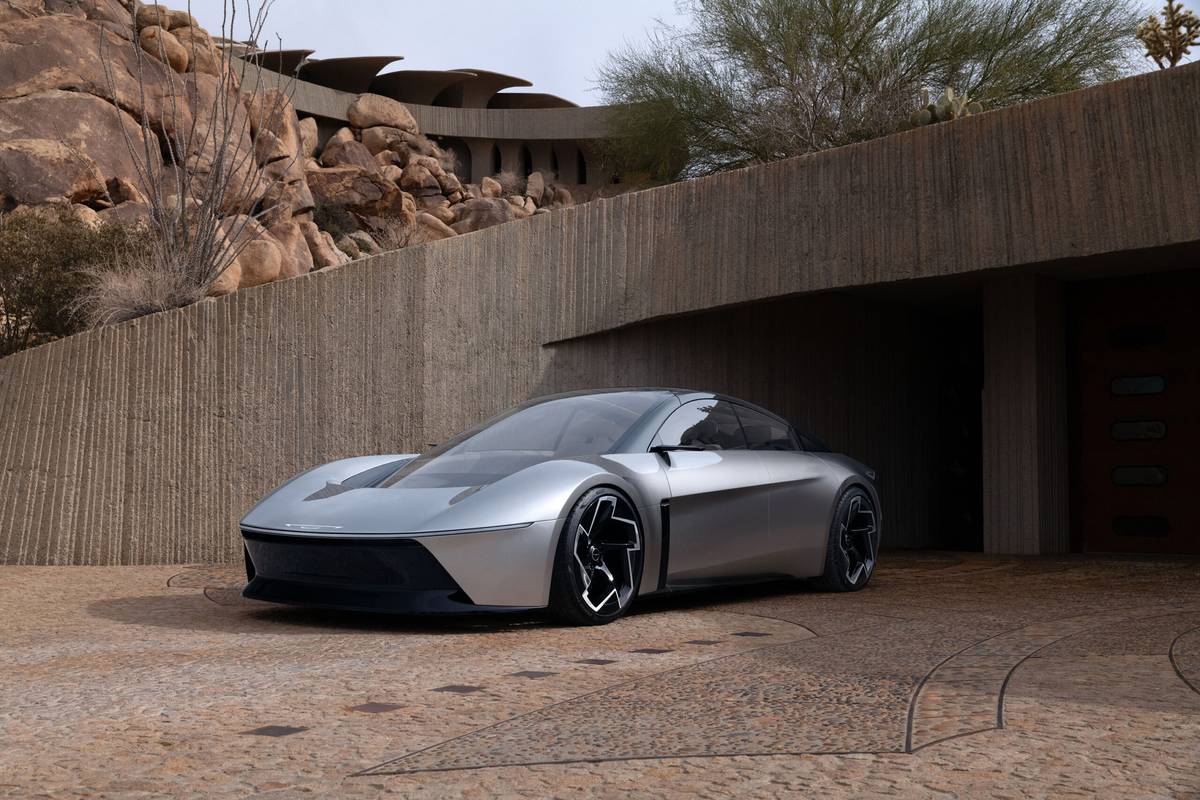
Chrysler has unveiled a new concept car the company says is the latest in a series of visions of where the brand is going with its all-electric lineup in the not-too-distant future. The Halcyon Concept joins other Chrysler concepts from the past few years (including the Portal van in 2017 and Airflow crossover in 2022) to hint at styling, technology and interior design themes for the brand coming in the latter half of this decade.
It might come as a surprise to people that Chrysler is still getting some attention at parent company Stellantis given it now has only the Pacifica and Pacifica Hybrid minivans to sell in showrooms — the 300 sedan has been discontinued for the 2024 model year, may it rest in power. But Chrysler executives insist the brand isn’t being phased out just yet and that new product is on the way, starting with an all-electric SUV in 2025 that will not be the Halcyon Concept you see here. So, what exactly is this new concept that Chrysler has come up with?
Related: Stellantis, Chrysler Announce All-Electric Future and Reveal Airflow Concept
Aerodynamic Anonymous Good Looks
The Halcyon concept is built off the Stellantis “STLA Large” platform, which will form the basis of a lot of the company’s mid- to large-size sedans and SUVs across brands. Aerodynamics was clearly top of mind in designing the shape, as evidenced by its extremely low ride height (the front end is just 4 inches off the pavement), the pass-through “air blade” look of the front end (just like the Dodge Charger Daytona concept we saw in 2023) and the unusual greenhouse. The doors open with a combination of what Chrysler calls a “butterfly-hinged” canopy and reverse opening rear doors with a pillarless entry. This means that part of the glass roof hinges up gullwing-style, the front doors open conventionally, and the rear doors of this four-door hatchback concept open in what we used to call “suicide-style” but don’t anymore.
The sides of the Halcyon Concept have interesting vertical blades that meet a character line that stretches to the rear end, culminating in a full-width LED taillight that matches the idea of the one seen at the front of the car. The idea of the concept is that without a conventional internal combustion powertrain, the packaging and design of the Halcyon could be changed up a little given the flexibility of the components and interior design. Interesting design elements include the fact that the car’s surface is more than 40% glass, with an enormous bubble-type canopy, and that recycled materials are used throughout, such as the crushed-up CDs that form the sparkly Chrysler wing logo in the door sills.
Proposed Tech Bits
Underneath the aerodynamic skin is the aforementioned STLA Large platform, but Chrysler is also promising that the car has a lot of new electric vehicle technology that will soon make its way into production vehicles for the brand. The concept car “envisions” having an 800-volt architecture that uses a new lithium-sulfur battery chemistry, a new kind of formula that does not use nickel, cobalt or manganese in the mix, allowing for a much lower carbon footprint in creating the batteries and eliminating a lot of the difficulty in sourcing rarer elements in battery production.
Chrysler also says the car should have an “unlimited range” due to its ability to use inductive charging from a specially prepared road surface. Called Dynamic Wireless Power Transfer, think of it as how wireless charging works on your cellphone meets how toy electric slot cars work. A specially made road includes inductive charging equipment embedded in the road’s surface that can wirelessly power the car as it travels over it. Such roads, you’ll note, do not actually exist anywhere other than in testing facilities, as the problem of “who pays for such expensive technology” and “can it hold up to winter weather, snowplows and heavy traffic” are still topics being debated.
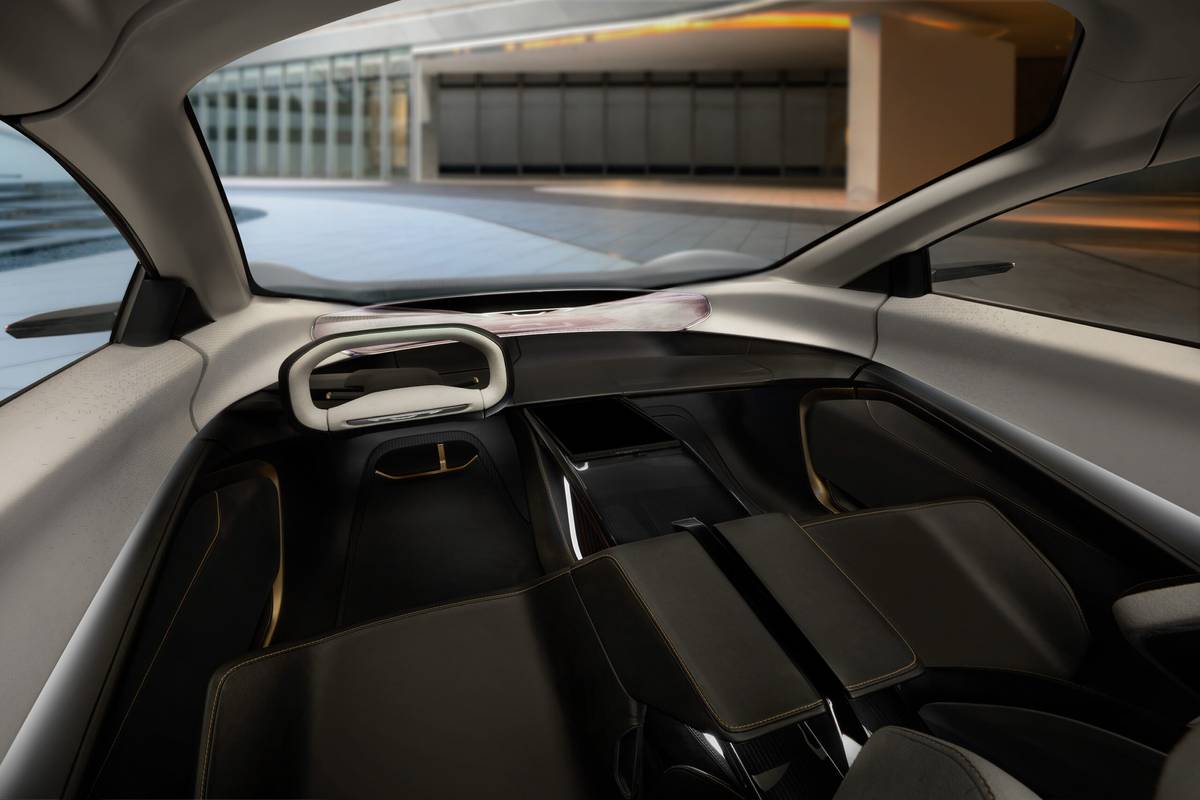
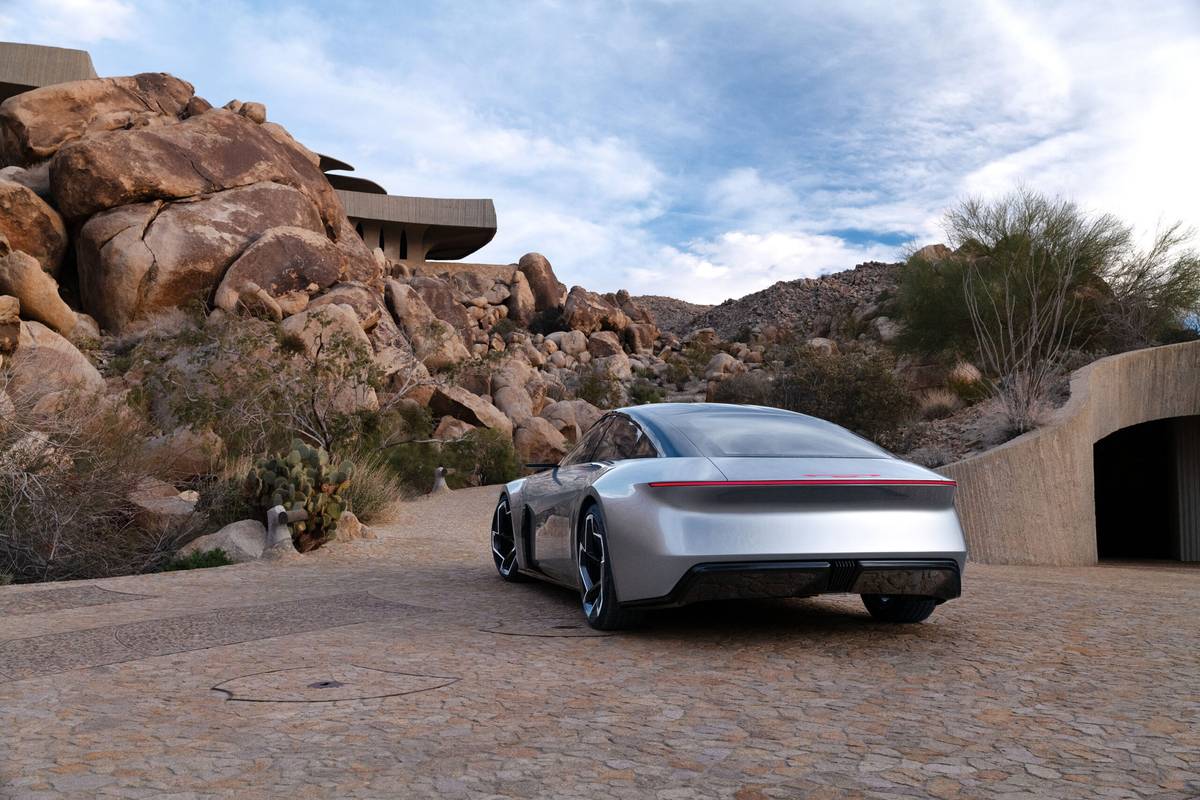
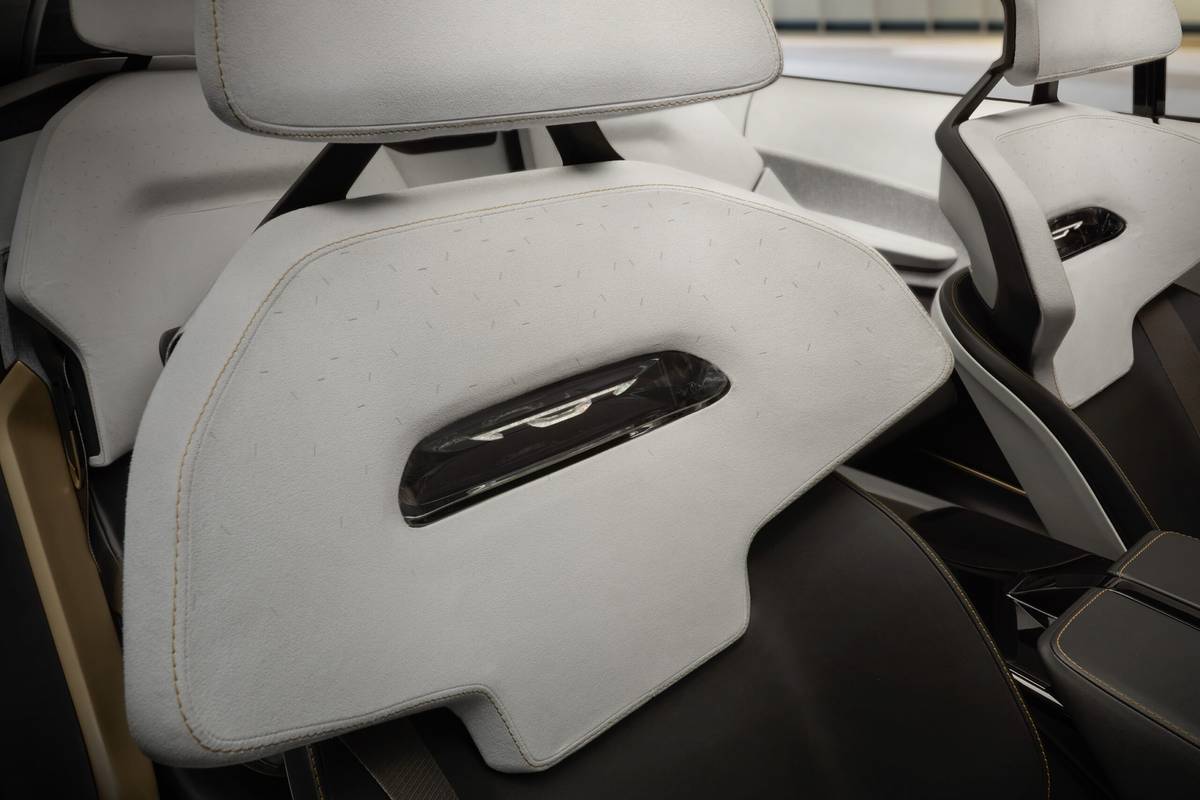
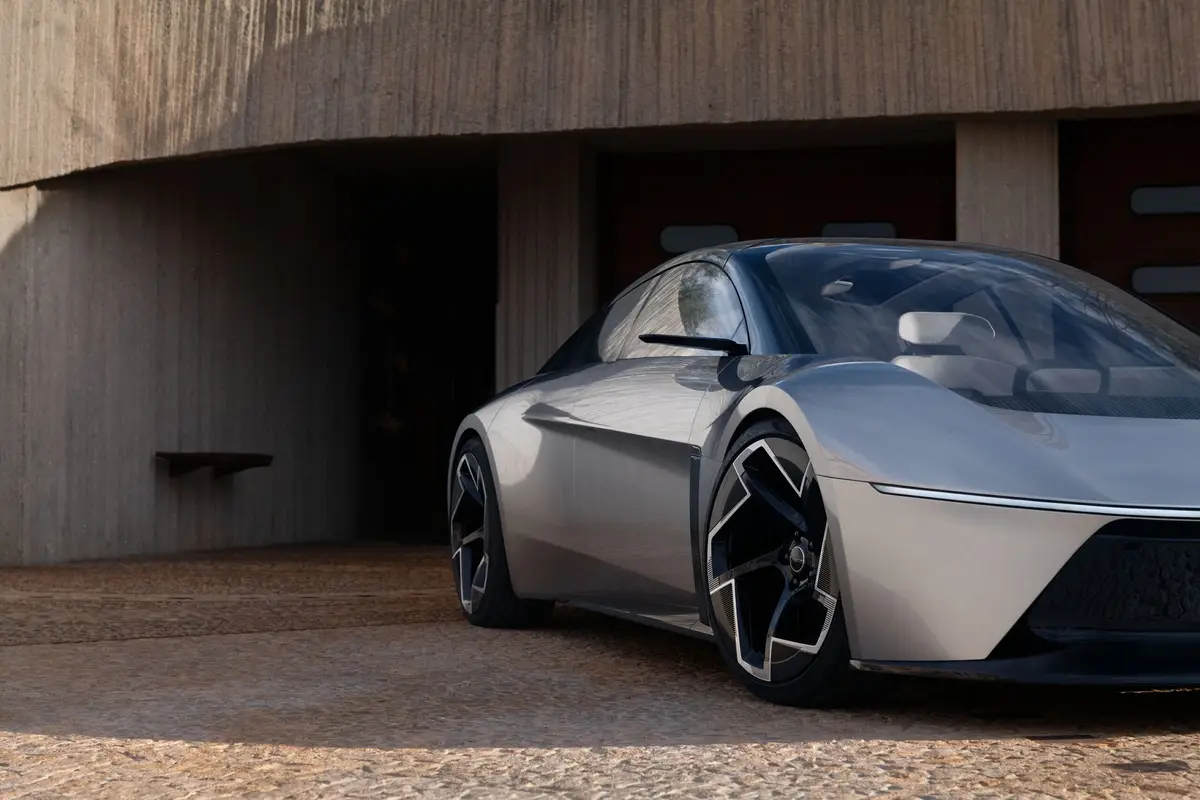
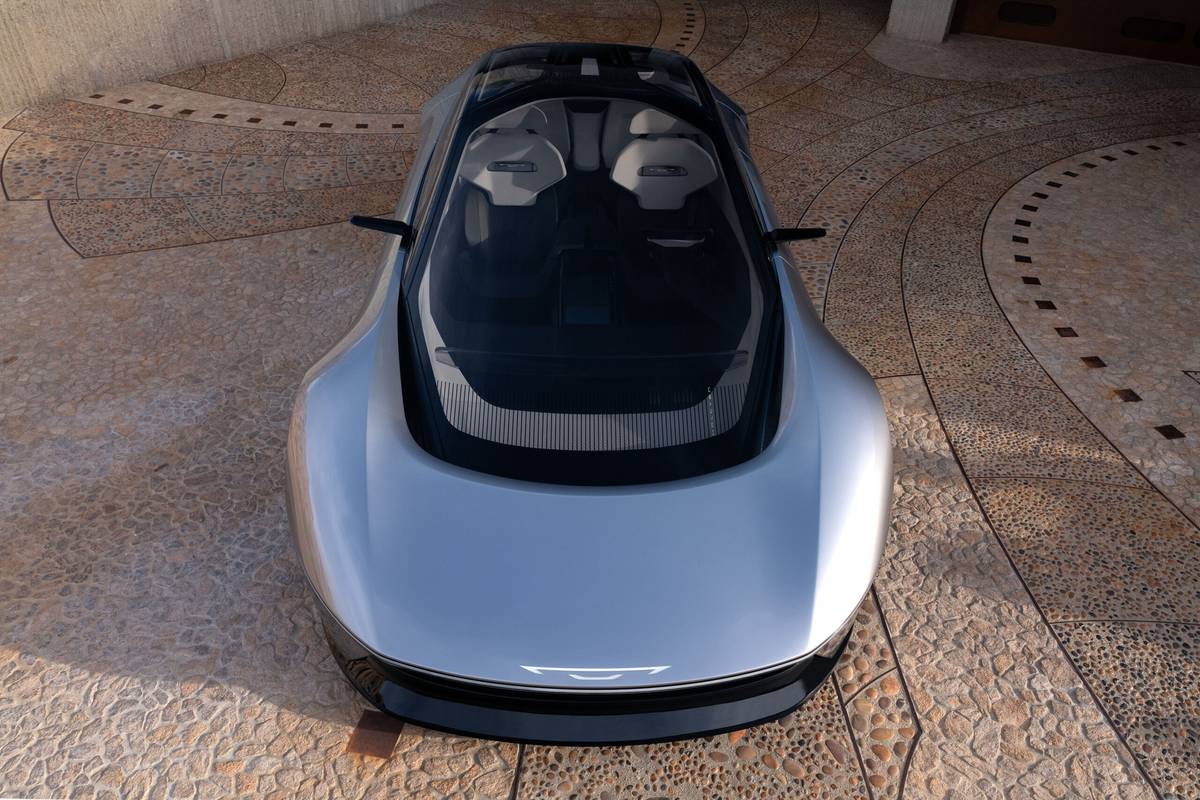
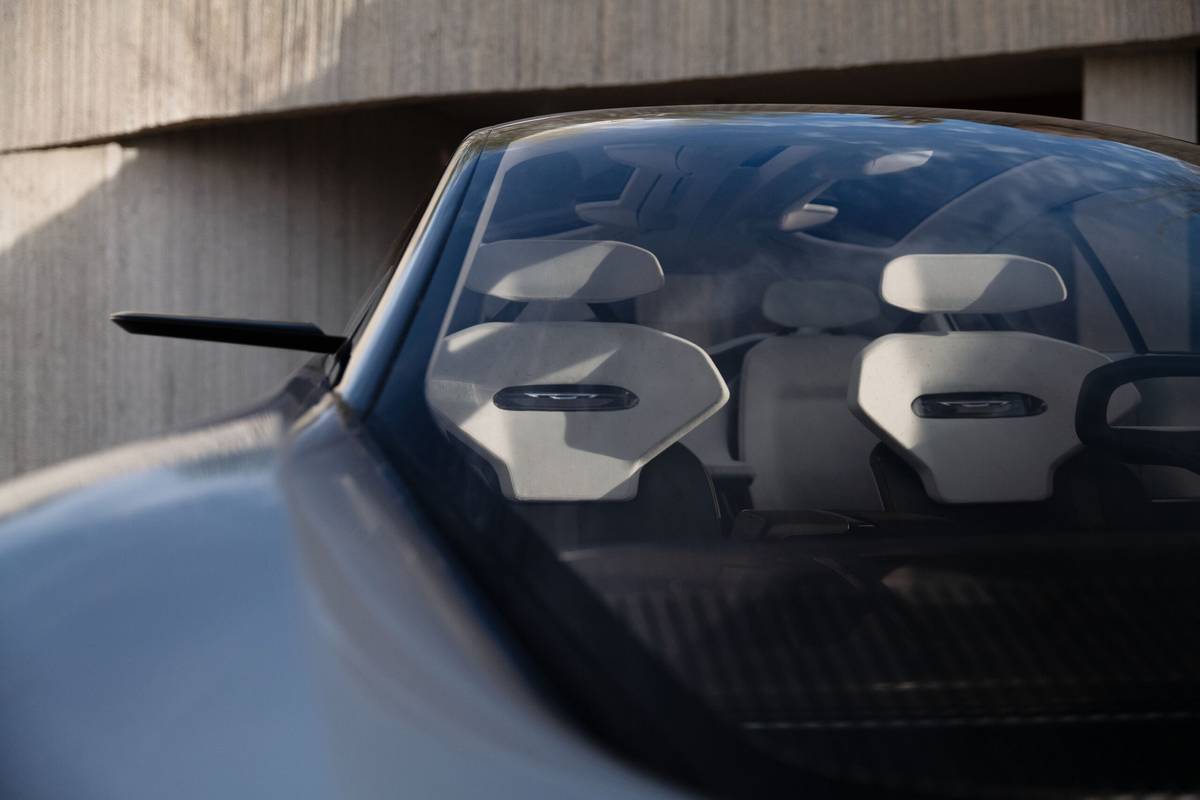

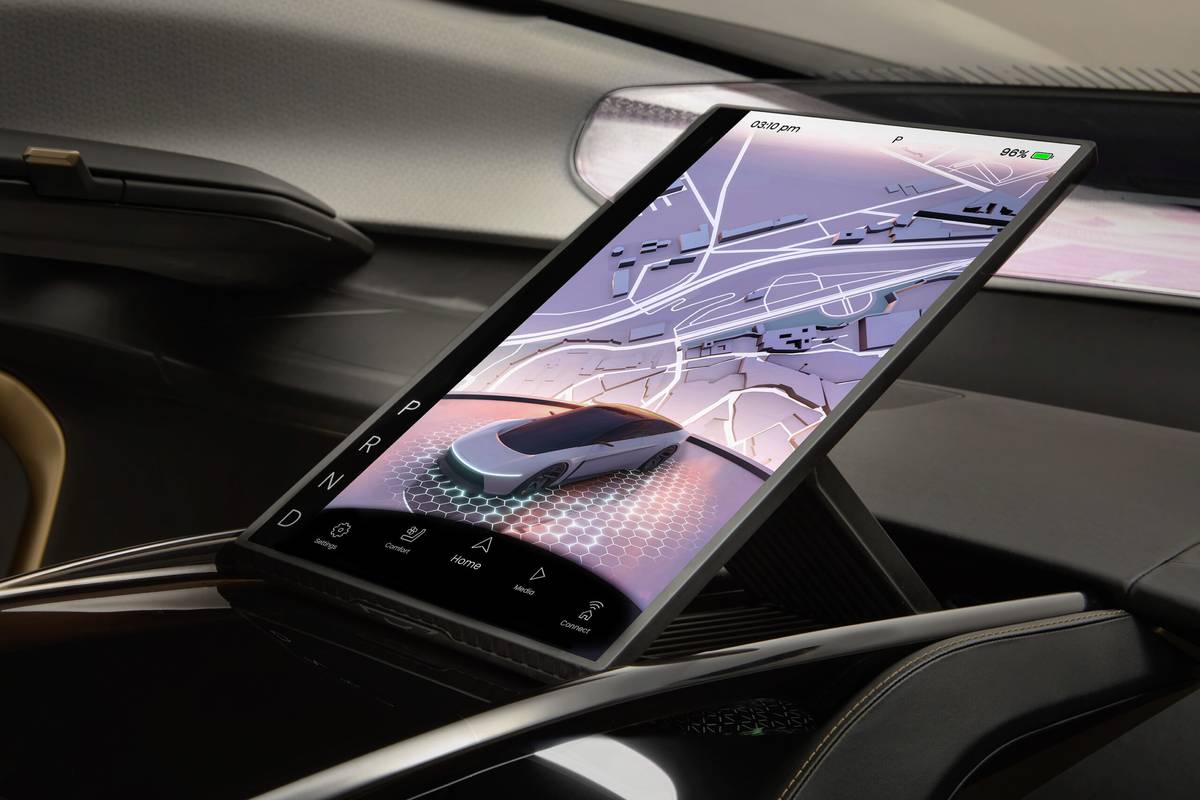
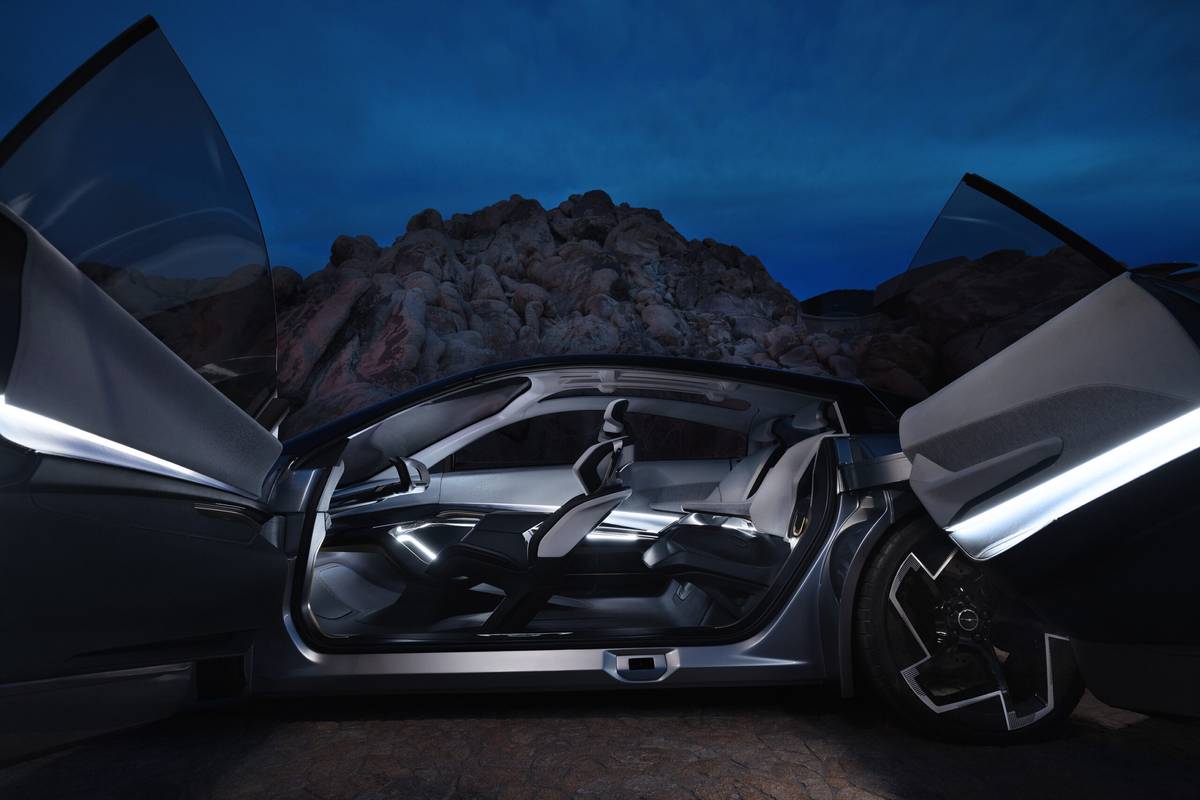

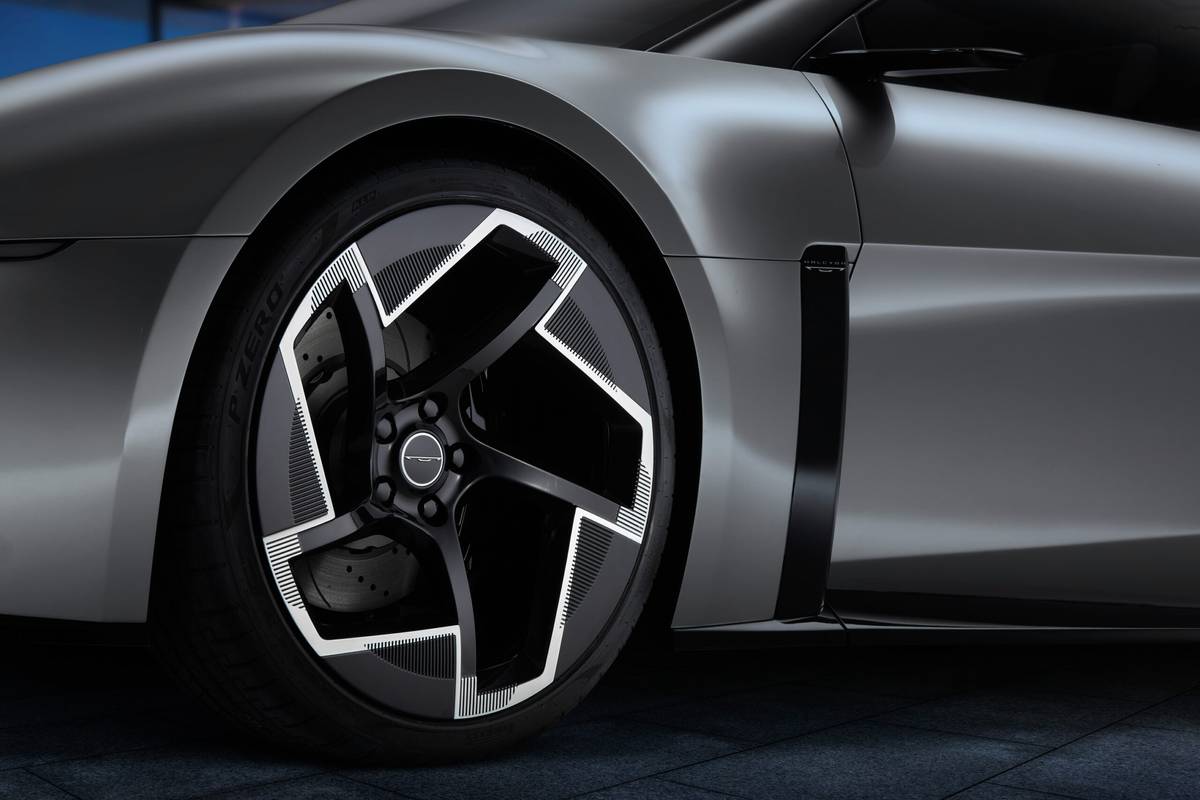











Highly Flexible Interior
The elimination of the conventional gas powertrain means that the interior packaging can be switched up, too, and Chrysler designers did just that in creating the Halcyon’s cabin space. A four-place coupe-like sedan, the Halcyon envisions a primarily autonomous driving experience, incorporating a lot of technology aimed at keeping passengers comfortable and occupied while the car does most of the driving. It incorporates three software-driven systems that will likely become more known as Stellantis starts rolling out EVs: STLA Brain, STLA SmartCockpit and STLA AutoDrive systems are all included in the Halcyon cockpit. These three systems combine to create different operating modes.
It starts with Welcome/Entry Mode, which uses facial biometrics to make the driver’s face the key that unlocks, opens the doors and starts the vehicle. Air suspension will automatically lower the vehicle, and sensors detect if the approaching driver is carrying anything that might need to go in the backseat, activating the next-generation of Stow ‘n Go seating by automatically folding and sliding the backseats into the trunk space. Pre-Drive Mode then sets the car’s various internal features like multimedia, mood lighting, sounds and displays on the vehicle’s various screens to the preset desires of the respective operator. Drive Mode is where the Halcyon takes control and drives the vehicle using the STLA AutoDrive Level 4 autonomous driving technology, enabling things like Stargazing Mode, which reclines the seats and uses augmented reality displays on the windshield and roof to do things like point out visible constellations. Finally, Exit Mode happens when you arrive at your destination, with seats and suspension automatically adjusting for easy egress, and then an autonomous parking function that sends the car off on its own to park after it’s dropped you off at the door.
In terms of interior design, the Halcyon Concept shows what Chrysler designers are considering as the requirements for vehicles change. Gone is the forward firewall, allowing passengers to see through the front of the vehicle and down into the air blade. A pillar-to-pillar display stretches across where the dashboard normally is, and a 15.6-inch glass control and display panel appears in the center console for controlling various features that you don’t want to use voice commands to adjust. The steering wheel folds away when the car is driving itself, but it can be brought back (again, through voice commands) in case the driver wants to … be a driver. The entire windshield is a head-up display, according to Chrysler, which can show things like saved points of interest, stream content or even go totally opaque for passenger privacy (which could be an interesting combination with those seats that completely recline, just sayin’).
More From Cars.com:
- 2024 Chrysler Pacifica Gets New Colors, Trims Lineup, Priced From $40,685
- Get Plugged Into Cars.com’s Guide for the EV Curious
- Chrysler Pares Down Pacifica Hybrid Lineup for 2024
- 2023 Chrysler 300C Rides Into the Sunset With 485 Horses Under the Hood
- Dodge Charger Daytona SRT Concept Previews America’s First Electric Muscle Car
Is This the Next Chrysler 300?
In unveiling the concept car at the company headquarters in Auburn Hills, Mich., Chrysler executives talked about the deep heritage and history of the brand — but none of that is reflected in this concept, which it must be said has a completely unoriginal shape that we’ve seen a dozen times before from myriad other brands. It’s pure aerodynamics with this one, which makes a lot of sense for any EV that wants to maximize its range (drag is the enemy of efficiency), but even the inside is devoid of style or interest. What it does have is a plethora of fascinating materials; it’s obvious that Chrysler designers used this opportunity to explore all kinds of new interior treatments, material sources and application techniques. The brand says that 95% of the interior is made from sustainable materials, and there are interesting items like wood floors made from textile-impregnated fibers, creative use of clear acrylics and ambient lighting, and film appliques simulating burnished metal trim. It all looks highly modern, but also feels like it could have any automaker’s badge on it. Nothing about the concept screams “Chrysler,” but then, perhaps that’s the point.
It does give hope that there will be a replacement for the 300 sedan that went out of production at the end of 2023, as the Canadian factory that made the car converts to a life of EV production. The first EV from Chrysler, which will be an SUV, is expected to arrive in 2025 and will likely be shown later in 2024 alongside a new Dodge model (which will likely be a sedan or coupe). As to where you can actually see this new Chrysler Halcyon concept in person, well, that may be tricky: Stellantis made the decision in early 2024 to pull out of all auto shows, including the recent Chicago Auto Show and the New York International Auto Show in April. Presumably, Chrysler intends to show it at other consumer-facing events and will announce where those might be sometime in the future.
Related Video:
Cars.com’s Editorial department is your source for automotive news and reviews. In line with Cars.com’s long-standing ethics policy, editors and reviewers don’t accept gifts or free trips from automakers. The Editorial department is independent of Cars.com’s advertising, sales and sponsored content departments.

Detroit Bureau Chief Aaron Bragman has had over 25 years of experience in the auto industry as a journalist, analyst, purchasing agent and program manager. Bragman grew up around his father’s classic Triumph sports cars (which were all sold and gone when he turned 16, much to his frustration) and comes from a Detroit family where cars put food on tables as much as smiles on faces. Today, he’s a member of the Automotive Press Association and the Midwest Automotive Media Association. His pronouns are he/him, but his adjectives are fat/sassy.
Featured stories















